2012 Volume Issue 15
June 4, 2012
For a downloadable version, click the following:
The May 2012 Employment Report: Encouraged Worker Effect? Well that’s part of it…
The Discouraged and Encouraged Worker Effect
Down the Rabbit Hole (and Through the Looking–glass): Where Employment Rises and Unemployment also Rises???
www.econnewsletter.com/may102011
Even though a person is in the Civilian Noninstitutional Population, if they are not working and are not seeking employment, they are not considered to be part of the labor force. As this phenomenon occurs and widens, we encounter what is called the Discouraged Worker Effect, where the Labor Force Participation Rate (the Labor Force as a percent of the Civilian Noninstitutional Population) decreases.
If they begin to look for work and are surveyed, they move back into the Labor Force and if not immediately employed, they are counted as Unemployed. This phenomenon is usually referred to as the Encouraged Worker Effect. This necessarily causes the labor force participation rate to increase. Typically, the Discouraged Worker Effect occurs at the beginning of an economic downturn and causes an understatement of the severity of the downturn and is replaced by an Encouraged Worker Effect with an economic upturn, thus understating the strength of the upturn. The longer the economy bumps along the bottom as it is doing now, at best; these relationships just described become less reliable.
Latest Developments – May 2012
The May Employment Report from the Bureau of Labor Statistics showed some positive signs as the Encouraged Worker Effect kicked in, meaning more workers moved into the Labor Force seeking employment; the downside was that there weren’t enough jobs created to keep the unemployment rate from rising.
642,000 people were added to the Labor Force, while [only] 422,000 of those folks found jobs. The difference between the growth in the Labor Force and the growth in the Employed was 220,000 which added to the Unemployed and drove up the official U–3 unemployment rate from 8.1% in April to 8.2% in May. On a further note, the U–6 unemployment rate, which accounts for more discouraged and other marginally attached workers, rose from 14.5% to 14.8%.
US Department of Labor, Bureau of Labor Statistics
THE EMPLOYMENT SITUATION —MAY 2012
http://www.bls.gov/news.release/pdf/empsit.pdf
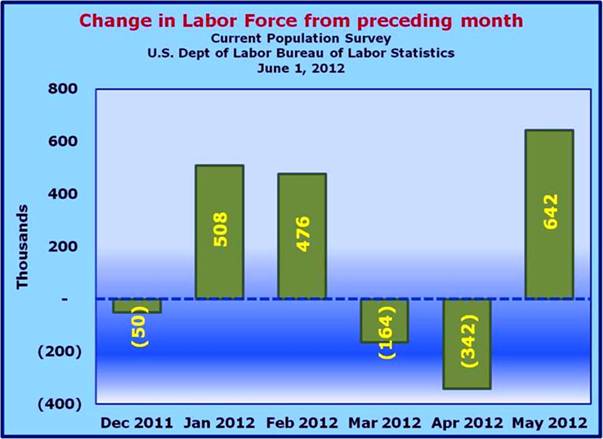
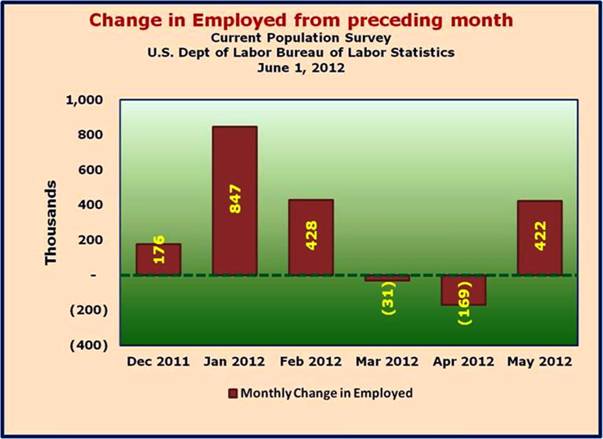
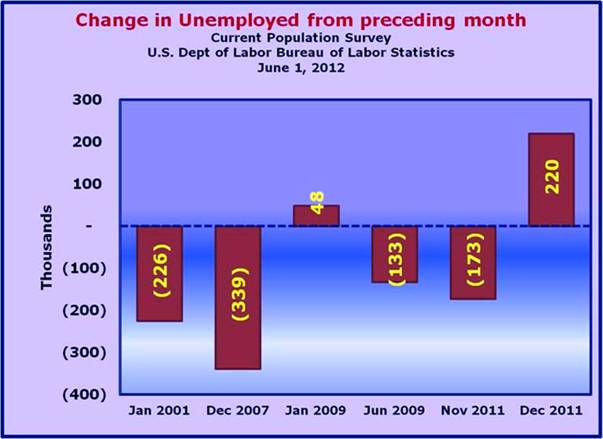

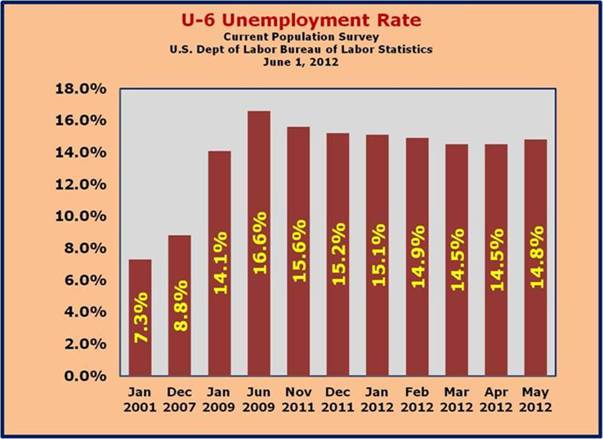
In spite of the possibility that there appears to be movement toward more job seekers, as evidenced by the rise in the Labor Force and the Labor Force Participation Rate (not necessarily successful job finders) in the most recent employment report, the question is will those folks enticed back into the labor force be rewarded with jobs in the coming months, or will they move back to the sidelines as those in the Civilian Noninstitutional Population not in the Labor Force? It’s seems that while people have taken heart, it won’t take much to move them back to the sidelines and out of the labor force yet again.

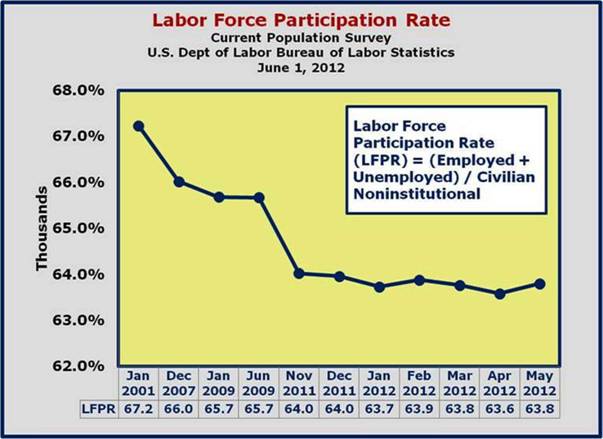
Turning to economic growth, the change in Real Gross Domestic Product showed a significant fall–off moving from 3.0% growth in the 4th quarter 2011 to 1.9% in the 1st quarter 2012. Considering the global instability, i.e., Europe, coupled with a raft of problems including anemic growth on the GDP front, the still–cratered housing market and the looming sunsetting of the so–called Bush Tax cuts, it’s very difficult to remain positive about the prospects for the labor markets.




